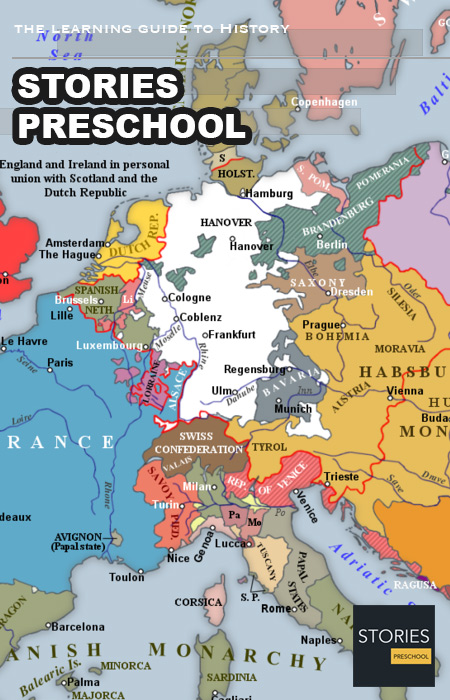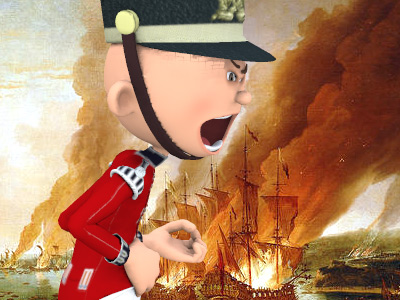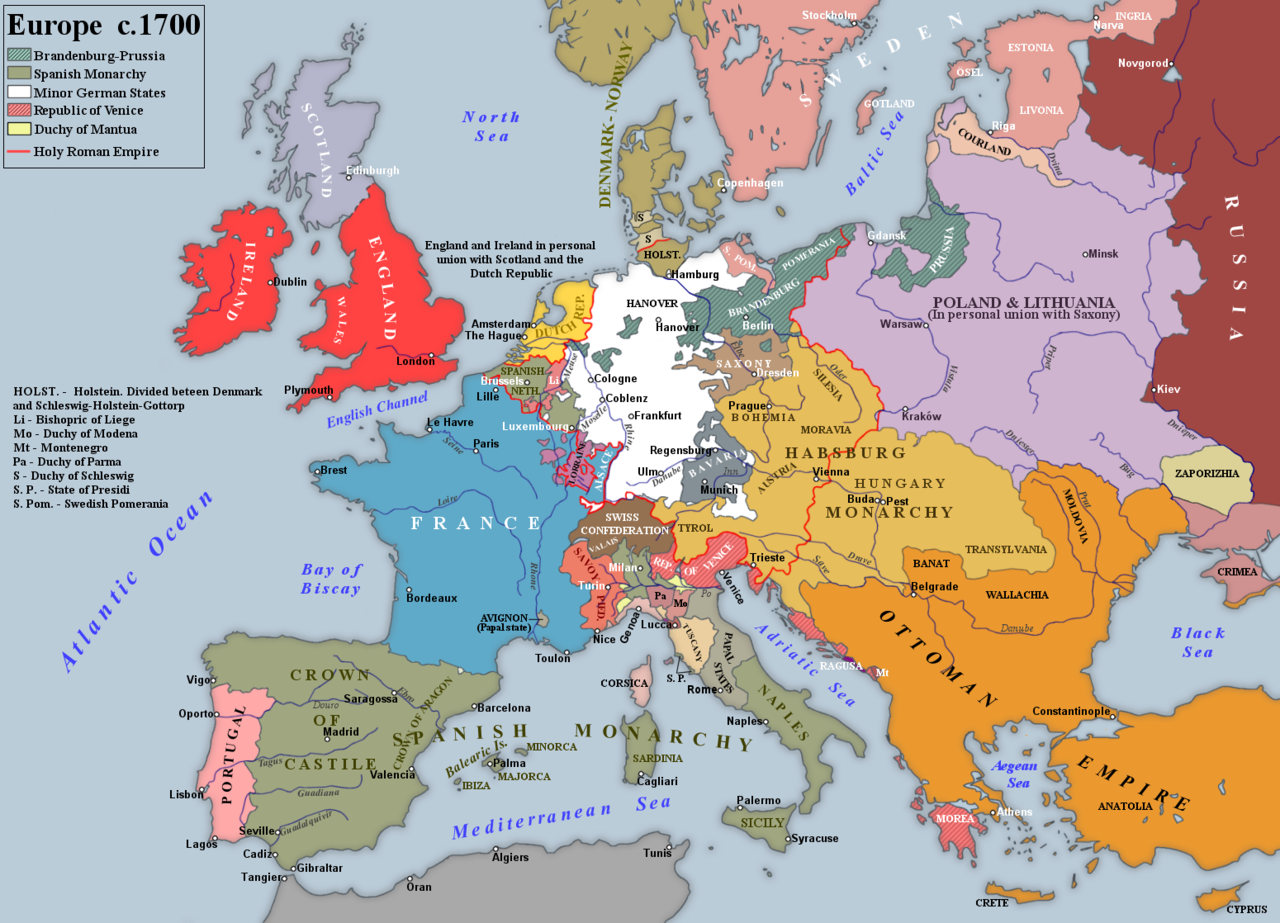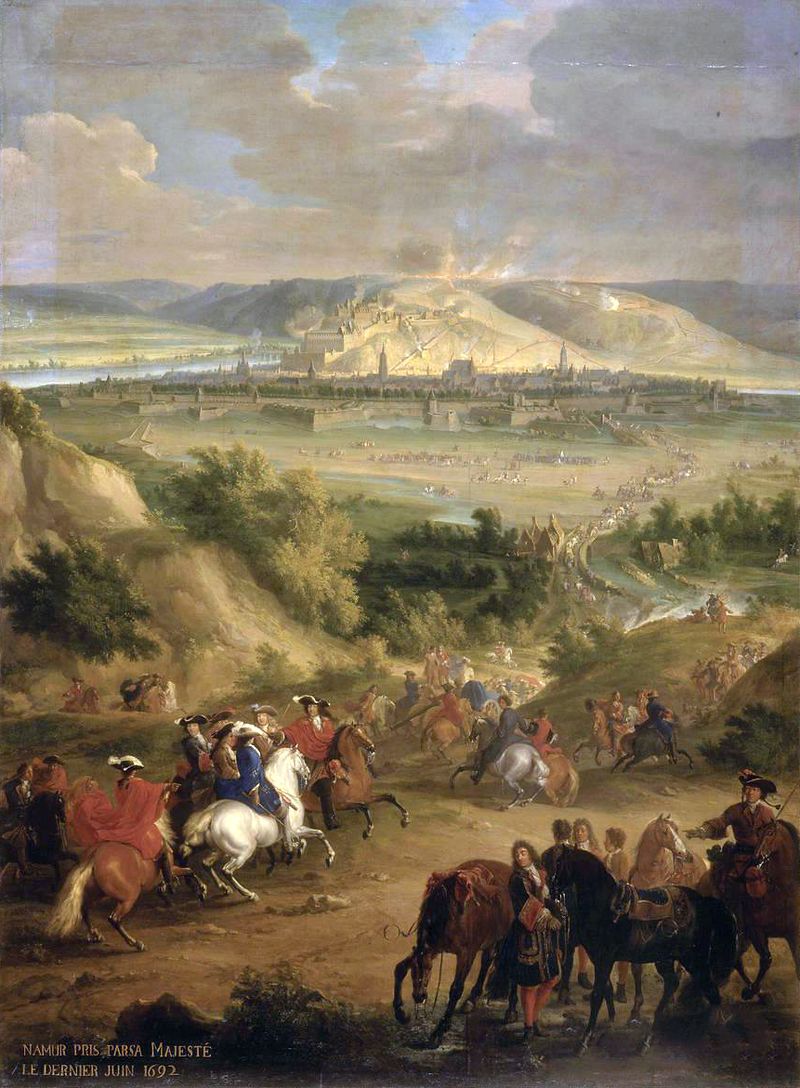Nine Years' War (1688–97)
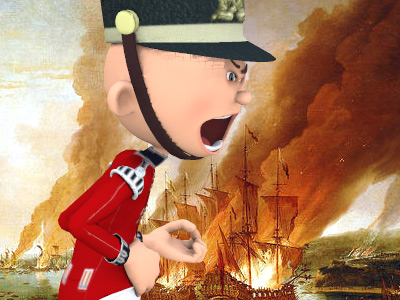
The Nine Years' War (1688–97) – often called the War of the Grand Alliance or the War of the League of Augsburg – was a major conflict between Louis XIV of France and a European-wide coalition of Austria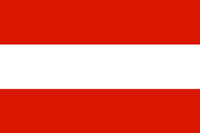 The Archduchy of Austria was a major principality of the Holy Roman Empire and the nucleus of the Habsburg monarchy. With its capital at Vienna, the archduchy was centered at the Empire's southeastern periphery. The archduchy's history as an imperial state ended with the dissolution of the Holy Roman Empire in 1806. It was replaced with the Lower and Upper Austria crown lands of the Austrian Empire. and the Holy Roman Empire
The Archduchy of Austria was a major principality of the Holy Roman Empire and the nucleus of the Habsburg monarchy. With its capital at Vienna, the archduchy was centered at the Empire's southeastern periphery. The archduchy's history as an imperial state ended with the dissolution of the Holy Roman Empire in 1806. It was replaced with the Lower and Upper Austria crown lands of the Austrian Empire. and the Holy Roman Empire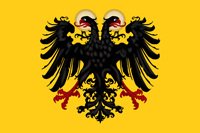 The Holy Roman Empire was a political entity in Western, Central, and Southern Europe that developed during the Early Middle Ages and continued until its dissolution in 1806 during the Napoleonic Wars. From the accession of Otto I in 962 until the twelfth century, the Empire was the most powerful monarchy in Europe. The empire reached the apex of territorial expansion and power in the mid-thirteenth century, but overextending led to partial collapse., the Dutch Republic
The Holy Roman Empire was a political entity in Western, Central, and Southern Europe that developed during the Early Middle Ages and continued until its dissolution in 1806 during the Napoleonic Wars. From the accession of Otto I in 962 until the twelfth century, the Empire was the most powerful monarchy in Europe. The empire reached the apex of territorial expansion and power in the mid-thirteenth century, but overextending led to partial collapse., the Dutch Republic The Dutch Republic was a confederation that existed from 1579, during the Dutch Revolt, to 1795. It was a predecessor state of the Netherlands and the first fully independent Dutch nation state. Although the state was small and contained only around 1.5 million inhabitants, it controlled a worldwide network of seafaring trade routes. The income from this trade allowed the Dutch Republic to compete militarily against much larger countries. It amassed a huge fleet of 2,000 ships, initially larger than the fleets of England and France combined., Spain, Britain, and Savoy. It was fought on the European continent and the surrounding seas, Ireland, and in North America. It also encompassed a theatre in Ireland and in Scotland, where William III and James II struggled for control of Britain and Ireland, and a campaign in colonial North America between French and English settlers and their respective Indian allies, today called King William's War by Americans.
The Dutch Republic was a confederation that existed from 1579, during the Dutch Revolt, to 1795. It was a predecessor state of the Netherlands and the first fully independent Dutch nation state. Although the state was small and contained only around 1.5 million inhabitants, it controlled a worldwide network of seafaring trade routes. The income from this trade allowed the Dutch Republic to compete militarily against much larger countries. It amassed a huge fleet of 2,000 ships, initially larger than the fleets of England and France combined., Spain, Britain, and Savoy. It was fought on the European continent and the surrounding seas, Ireland, and in North America. It also encompassed a theatre in Ireland and in Scotland, where William III and James II struggled for control of Britain and Ireland, and a campaign in colonial North America between French and English settlers and their respective Indian allies, today called King William's War by Americans.
Louis XIV of France The Kingdom of France is the historiographical name or umbrella term given to various political entities of France in the medieval and early modern period. It was one of the most powerful states in Europe since the High Middle Ages. It was also an early colonial power, with possessions around the world. Colonial conflicts with Great Britain led to the loss of much of its North American holdings by 1763. The Kingdom of France adopted a written constitution in 1791, but the Kingdom was abolished a year later and replaced with the First French Republic. had emerged from the Franco-Dutch War in 1678 as the most powerful monarch in Europe, an absolute ruler who had won numerous military victories. Using a combination of aggression, annexation, and quasi-legal means, Louis XIV set about extending his gains to stabilize and strengthen France's frontiers, culminating in the brief War of the Reunions (1683–84). The resulting Truce of Ratisbon guaranteed France's new borders for twenty years, but Louis XIV's subsequent actions – notably his revocation of the Edict of Nantes in 1685 – led to the deterioration of his military and political dominance. Louis XIV's decision to cross the Rhine in September 1688 was designed to extend his influence and pressure the Holy Roman Empire into accepting his territorial and dynastic claims. But when Leopold I and the German princes resolved to resist, and when the States General and William III brought the Dutch and the English into the war against France, the French King at last faced a powerful coalition aimed at curtailing his ambitions.
The Kingdom of France is the historiographical name or umbrella term given to various political entities of France in the medieval and early modern period. It was one of the most powerful states in Europe since the High Middle Ages. It was also an early colonial power, with possessions around the world. Colonial conflicts with Great Britain led to the loss of much of its North American holdings by 1763. The Kingdom of France adopted a written constitution in 1791, but the Kingdom was abolished a year later and replaced with the First French Republic. had emerged from the Franco-Dutch War in 1678 as the most powerful monarch in Europe, an absolute ruler who had won numerous military victories. Using a combination of aggression, annexation, and quasi-legal means, Louis XIV set about extending his gains to stabilize and strengthen France's frontiers, culminating in the brief War of the Reunions (1683–84). The resulting Truce of Ratisbon guaranteed France's new borders for twenty years, but Louis XIV's subsequent actions – notably his revocation of the Edict of Nantes in 1685 – led to the deterioration of his military and political dominance. Louis XIV's decision to cross the Rhine in September 1688 was designed to extend his influence and pressure the Holy Roman Empire into accepting his territorial and dynastic claims. But when Leopold I and the German princes resolved to resist, and when the States General and William III brought the Dutch and the English into the war against France, the French King at last faced a powerful coalition aimed at curtailing his ambitions.
The main fighting took place around France's borders: in the Spanish Netherlands; the Rhineland; Duchy of Savoy; and Catalonia. The fighting generally favoured Louis XIV's armies, but by 1696 his country was in the grip of an economic crisis. The Maritime Powers (England and the Dutch Republic) were also financially exhausted, and when Savoy defected from the Alliance all parties were keen for a negotiated settlement. By the terms of the Treaty of Ryswick (1697) Louis XIV retained the whole of Alsace, but he was forced to return Lorraine to its ruler and give up any gains on the right bank of the Rhine. Louis XIV also accepted William III as the rightful King of England The Kingdom of England was a sovereign state on the island of Great Britain from about 927, when it emerged from various Anglo-Saxon kingdoms, until 1 May 1707, when it united with Scotland to form the Kingdom of Great Britain. The Viking invasions of the 9th century upset the balance of power between the English kingdoms, and native Anglo-Saxon life in general. The English lands were unified in the 10th century in a reconquest completed by King Æthelstan in 927., while the Dutch acquired their Barrier fortress system in the Spanish Netherlands to help secure their own borders. However, with the ailing and childless Charles II of Spain approaching his end, a new conflict over the inheritance of the Spanish Empire
The Kingdom of England was a sovereign state on the island of Great Britain from about 927, when it emerged from various Anglo-Saxon kingdoms, until 1 May 1707, when it united with Scotland to form the Kingdom of Great Britain. The Viking invasions of the 9th century upset the balance of power between the English kingdoms, and native Anglo-Saxon life in general. The English lands were unified in the 10th century in a reconquest completed by King Æthelstan in 927., while the Dutch acquired their Barrier fortress system in the Spanish Netherlands to help secure their own borders. However, with the ailing and childless Charles II of Spain approaching his end, a new conflict over the inheritance of the Spanish Empire The Spanish Empire was a colonial empire governed by Spain and its predecessor states between 1492 and 1976. One of the largest empires in history, it was the first to usher the European Age of Discovery and achieve a global scale, controlling vast territory. It was one of the most powerful empires of the early modern period, reaching its maximum extent in the 18th century. would soon embroil Louis XIV and the Grand Alliance in a final war – the War of the Spanish Succession.
The Spanish Empire was a colonial empire governed by Spain and its predecessor states between 1492 and 1976. One of the largest empires in history, it was the first to usher the European Age of Discovery and achieve a global scale, controlling vast territory. It was one of the most powerful empires of the early modern period, reaching its maximum extent in the 18th century. would soon embroil Louis XIV and the Grand Alliance in a final war – the War of the Spanish Succession.
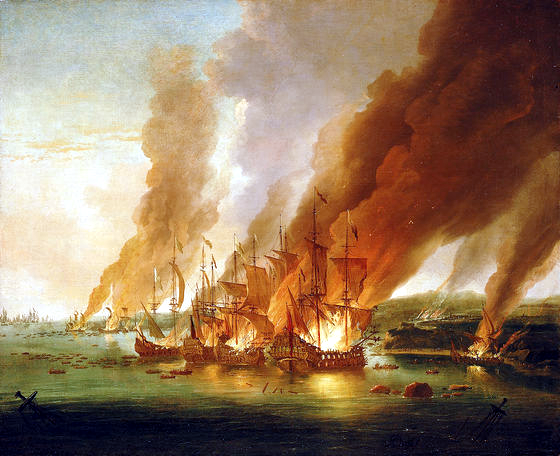
Battle of La Hogue, (1692) by Adriaen van Diest. The last act of the battle – French ships set on fire at La Hogue
Weapons, Technology, and the Art of War
Military Developments
The campaign season typically lasted through May to October; due to lack of fodder campaigns in winter were rare, but the French practice of storing food and provisions in magazines brought them considerable advantage, often enabling them to take to the field weeks before their foes. Nevertheless, military operations during the Nine Years' War did not produce decisive results. The war was dominated by what may be called 'positional warfare' – the construction, defence, and attack of fortresses and entrenched lines. Positional warfare played a wide variety of roles: fortresses controlled bridgeheads and passes, guarded supply routes, and served as storehouses and magazines. However, fortresses hampered the ability to follow success on the battlefield – defeated armies could flee to friendly fortifications, enabling them to recover and rebuild their numbers from less threatened fronts. Many lesser commanders welcomed these relatively predictable, static operations to mask their lack of military ability. As Daniel Defoe observed in 1697, "Now it is frequent to have armies of 50,000 men of a side [who] spend the whole campaign in dodging – or, as it is genteelly called – observing one another, and then march off into winter quarters." In fact, during the Nine Years' War field armies had waxed to nearly 100,000 men in 1695, the strain of which had reduced the Maritime Powers to a fiscal crisis while the French struggled under the weight of a shattered economy. Yet there were aggressive commanders: William III, Boufflers, and Luxembourg had the will to win but their methods were hampered by numbers, supply, and communications. The French commanders were also restricted by Louis XIV and Louvois who distrusted field campaigns, preferring Vauban, the taker of fortifications, rather than campaigns of movement.
Another contributing factor for the lack of decisive action was the necessity to fight for secure resources. Armies were expected to support themselves in the field by imposing contributions (taxing local populations) upon a hostile, or even neutral, territory. Subjecting a particular area to contributions was deemed more important than pursuing a defeated army from the battlefield to destroy it. It was primarily financial concerns and availability of resources that shaped campaigns, as armies struggled to outlast the enemy in a long war of attrition. The only decisive action during the whole war came in Ireland where William III crushed the forces of James II in a campaign for legitimacy and control of Britain and Ireland. But unlike Ireland, Louis XIV's Continental wars were never fought without compromise: the fighting provided a foundation for diplomatic negotiations and did not dictate a solution.
The major advancement in weapon technology in the 1690s was the introduction of the flintlock musket. The flintlock firing mechanism provided superior rates of fire and accuracy over the cumbersome matchlocks. But the adoption of the flintlock was not initially universal. Until 1697 for every three Allied soldiers that were equipped with the new flintlocks, two soldiers were still handicapped by matchlocks: French second-line troops were issued matchlocks as late as 1703. These weapons were further enhanced with the development of the socket-bayonet. Its predecessor, the plug-bayonet – jammed down the firearm's barrel – not only prevented the musket from firing but was also a clumsy weapon that took time to fix properly, and even more time to unfix. In contrast, the socket-bayonet could be drawn over the musket's muzzle and locked into place by a lug, converting the musket into a short pike yet leaving it capable of fire. The disadvantage of the pike came to be widely recognised: at the Battle of Fleurus in 1690, German battalions armed only with the musket repulsed French cavalry attacks more effectively than units conventionally armed with the pike, while Catinat had abandoned his pikes altogether before undertaking his Alpine campaign against Savoy.
Naval Developments
In 1688 the most powerful navies were the French, English, and Dutch; the Spanish and Portuguese navies had suffered serious declines in the 17th century. The largest French ships of the period were the Soleil Royal and the Royal Louis. Each rated for 120 guns, they never carried their full complement. These ships were too large for practical purposes. The former only sailed on one campaign and was destroyed at La Hogue; the latter languished in port until sold in 1694. By the 1680s, French ship-design was at least equal to its English and Dutch counterparts, and by the Nine Years' War the French fleet had surpassed ships of the Royal Navy, whose designs stagnated in the 1690s. Innovation in the Royal Navy, however, did not cease. At some stage in the 1690s, for example, English ships began to employ the steering wheel, greatly improving their performance, particularly in heavy weather. (The French navy did not adopt the wheel for another thirty years)
Combat between naval fleets was decided by cannon duels delivered by ships in line of battle; fireships were also used but were mainly successful against anchored and stationary targets, while the new bomb vessels operated best in bombarding targets on shore. Sea battles rarely proved decisive. Fleets faced the almost impossible task of inflicting enough damage on ships and men to win a clear victory: ultimate success depended not on tactical brilliance but on sheer weight of numbers. Here Louis XIV was at a disadvantage: without as large a maritime commerce as benefited the Allies, the French were unable to supply as many experienced sailors for their navy. Most importantly, though, Louis XIV had to concentrate his resources on the army at the expense of the fleet, enabling the Dutch, and the English in particular, to outdo the French in ship construction. However, naval actions were comparatively uncommon and, just like battles on land, the goal was generally to outlast rather than to destroy one's opponent. Louis XIV regarded his navy as an extension of his army - the French fleet's most important role was to protect the French coast from enemy invasion. Louis used his fleet to support land and amphibious operations or the bombardment of coastal targets, designed to draw enemy resources from elsewhere and thus aid his land campaigns on the continent.
Once the Allies had secured a clear superiority in numbers the French found it prudent not to contest them in fleet action. At the start of the Nine Years' War the French fleet had 118 rated vessels and a total of 295 ships of all types. By the end of the war the French had 137 rated ships. In contrast the English fleet started the war with 173 vessels of all types, and ended it with 323. Between 1694 and 1697 the French built 19 first- to fifth-rated ships; the English built 58 such vessels, and the Dutch constructed 22. Thus the maritime powers outbuilt the French at a rate of four vessels to one.
HISTORY
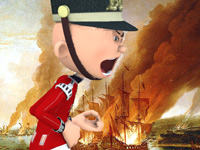
RESOURCES
This article uses material from the Wikipedia article "Nine Years' War", which is released under the Creative Commons Attribution-Share-Alike License 3.0.
© Stories Preschool. All Rights Reserved.
